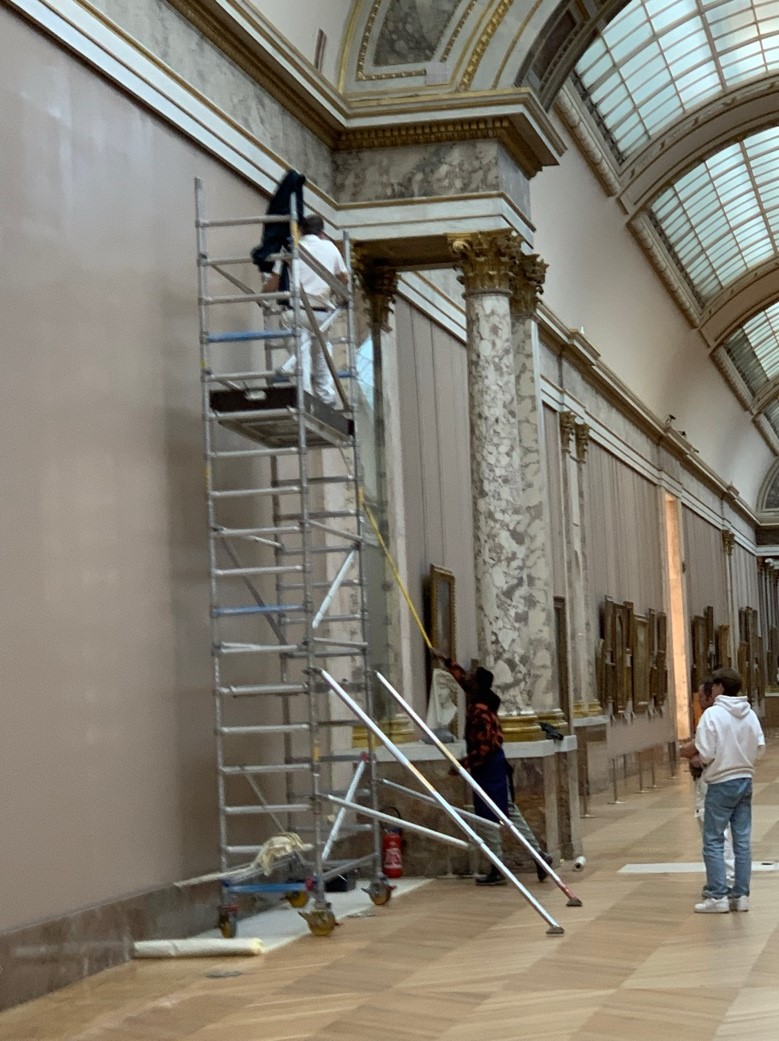

The Phantom of the Salle des Sept Mètres
My Louvre by Antoine Compagnon

The Phantom of the Salle des Sept Mètres
One Tuesday in winter, the day the museum is closed, I decide to watch the paintings from the Museo di Capodimonte in Naples being taken down from the Grande Galerie, where they have been exhibited since summer. They vanish section by section, over the course of several Tuesdays, the same way they were hung in the spring. Some are still here; others are being busily removed. Workers, standing atop moveable scaffolds and equipped with a level, adjust the alignment of the Louvre’s paintings being returned to their places, while curators give instructions from below. A little farther on, a small team repaints a newly freed panel, which will remain bare for several days. I like this bustle of Tuesdays, and also that of evenings, as soon as the visitors have left the building. The show is over; the rooms belong again to all these people whose care it is to maintain the biggest museum in the world. Letting them work, I head off through the Salle des Sept Mètres, deserted today. I can hear myself walking; my footsteps echo in the silence of the closed halls (Denon, room 709). Toward the middle of the room, a floorboard starts creaking. I retrace my steps. The floor creaks all the louder. In my memory, the Salle des Sept Mètres will forever be associated with a floor that creaks on Tuesdays, but I still don’t know whether the room is seven meters high or wide—or who gave it this name.